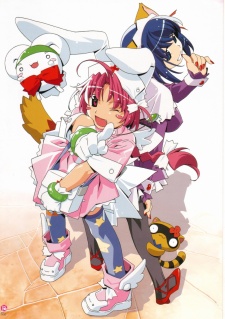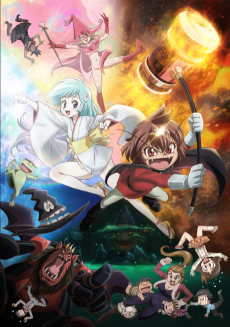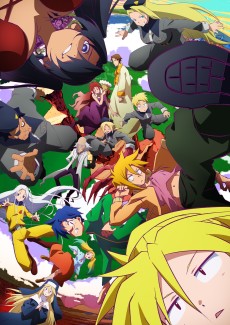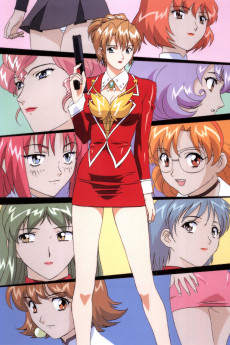RE: CUTIE HONEY
STATUS
COMPLETE
EPISODES
3
RELEASE
September 25, 2004
LENGTH
45 min
DESCRIPTION
A mysterious organization known as Panther Claw make their presence known by terrorizing Tokyo and giving the cops a run for their money. Police are further baffled by the appearance of a lone cosplaying vigilante who thwarts all of Panther Claw's evil schemes before disappearing. That cosplayer is Honey Kisaragi, the result of the late Professor Kisaragi's prize experiment. A master of disguise, Honey can magically alter her physical appearance and outfits. But with a push of the heart-shaped button on her choker, she transforms herself into Cutie Honey, the scantily-clad, sword-wielding warrior of love and justice.
(Source: Anime News Network)
CAST
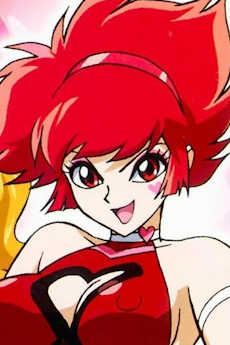
Honey Kisaragi
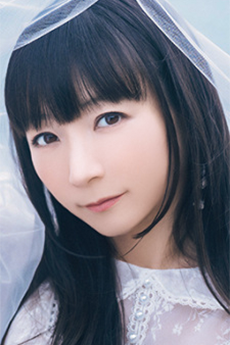
Yui Horie
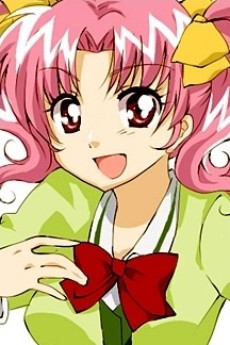
Natsuko Aki
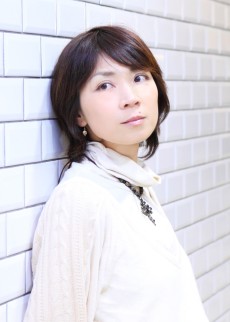
Junko Noda
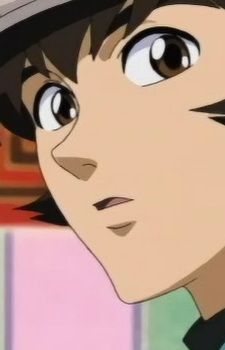
Seiji Hayami
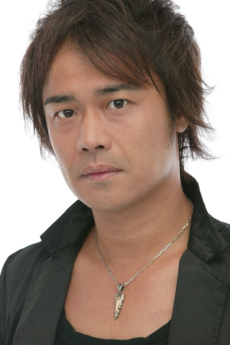
Hideo Ishikawa
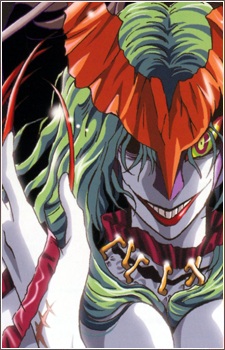
Sister Jill

Kazue Ikura
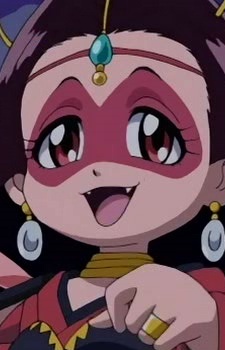
Scarlet Claw

Hiromi Konno
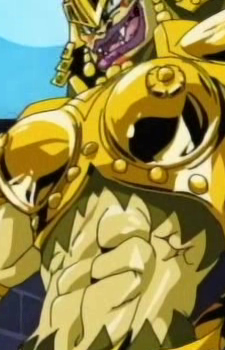
Gold Claw
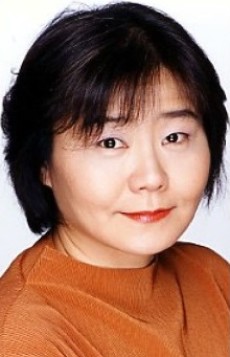
Noriko Uemura

Kyouko Izumiya
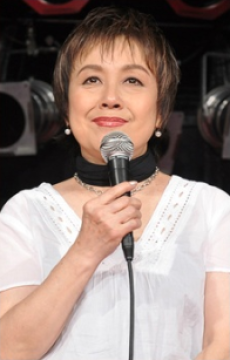
Kazuko Sugiyama

Destroy Panther

Kimiko Saitou
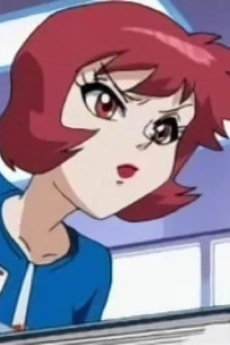
Rinko Terada
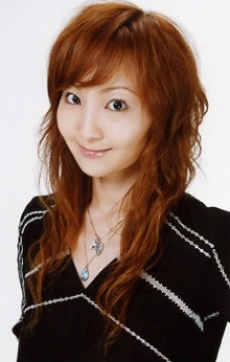
Yuka Komatsu
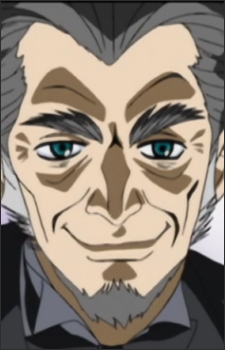
Shitsuji
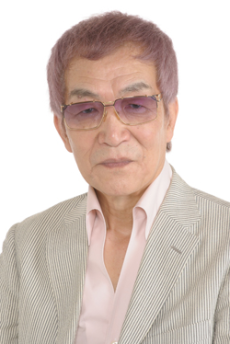
Motomu Kiyokawa

Scope Panther
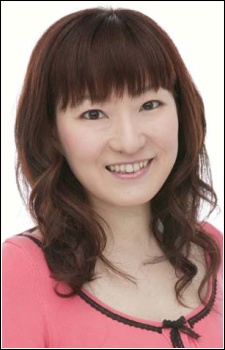
Chigusa Ikeda
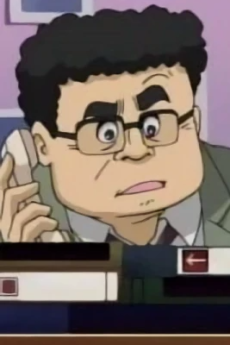
Tokimura
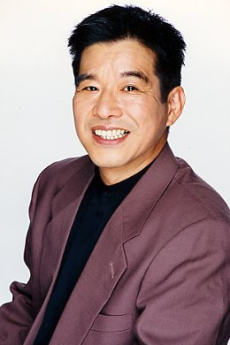
Kazumi Tanaka
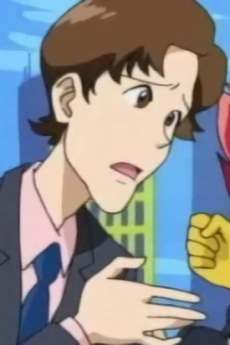
Mikami
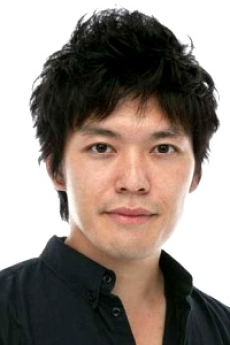
Ryouhei Nakao
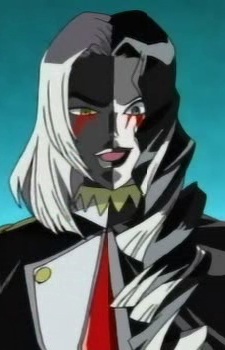
Black Claw
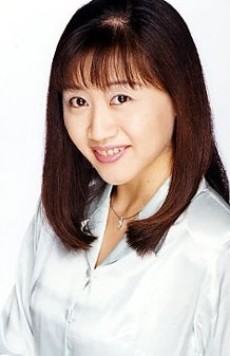
Yumi Touma
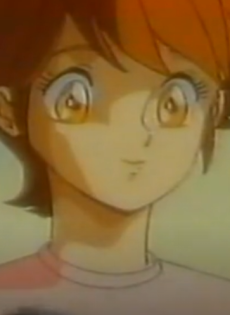
Mayumi Takahashi
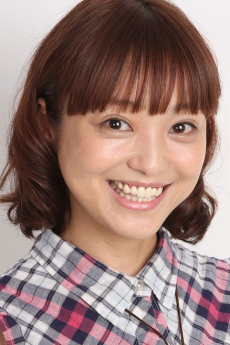
Tomoko Kaneda
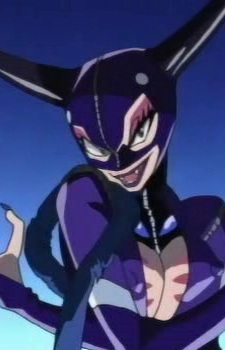
Cobalt Claw
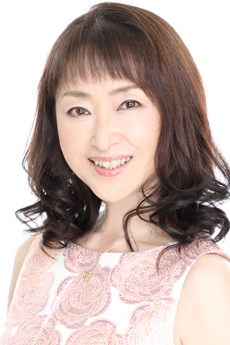
Mami Kingetsu
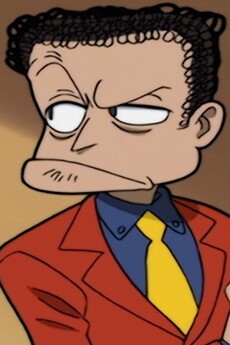
Mannen Kakarichou
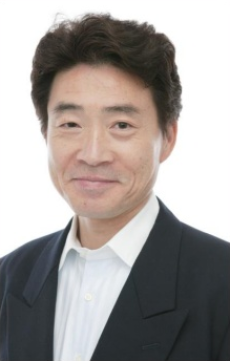
Bin Shimada
EPISODES
Dubbed
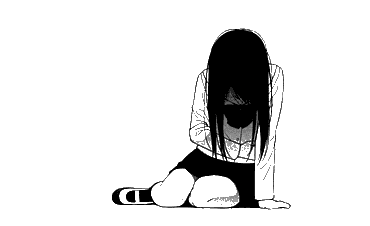
Not available on crunchyroll
RELATED TO RE: CUTIE HONEY
 ANIME ActionCutey Honey
ANIME ActionCutey Honey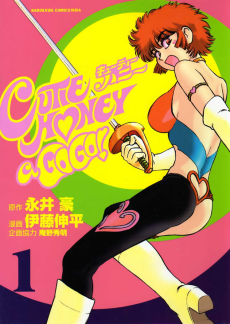 MANGA ActionCutie Honey a Go Go!
MANGA ActionCutie Honey a Go Go!REVIEWS

blizar
83/100Re: Cutie Honey - A Sexy, Fun ExperienceContinue on AniListRe: Cutie Honey consists of 3 fast paced OVAs with fun characters and a rule of cool storyline all presented with artistic animation that was way ahead of its time.
What makes these OVAs really special is the number of popular names that are credited for these episodes. Episode 1 was directed by Hiroyuki Imaishi, most known for his directorial work with Studio Trigger, for example Gurren Lagaan, Kill La Kill and most recently Cyberpunk Edgerunners. Episode 2 was directed by Naoyuki Ito, who went on to direct Overlord and other Madhouse anime. But most importantly, episode 3 was directed by Hideaki Anno, the director of the Evangelion franchise. With three of the industry’s big names involved in the visual presentation aspect of this anime, you can tell that these OVAs are going to be a feast for the eyes.
The plot however is less noteworthy, consisting mostly of the cartoony evil bad guys terrorizing a town that our superhero Cutie Honey has to save. The first two episodes are mostly filled with ecchi jokes and cool battles, although entertaining, lack much substance. That’s until the third episode which since directed by Hideaki Anno, explores themes of isolation and identity which may come off as pretentious considering the tone of the previous two episodes.
The characters are colorful and lively and do undergo character development throughout the OVAs. Most of all, they’re a lot of fun, as they’re charismatic and have some human elements which increase their relatability. Overall, the characters aren’t amazing but they’re much better than you’d expect from a fanservice action OVA series.
That brings me to the next point: the fanservice. These OVAs are filled with it, from skimpy character designs to characters losing clothes in battle, and there’s even some yuri scenes in there for the yuri fans. However, unlike most anime, this show handles fanservice very well. The pace of the storyline and action is never hindered by it and isn’t used to dehumanize the female characters; rather, it empowers them. Of course, those who don’t like ecchi will still not enjoy it. Nevertheless, people like me, who don’t mind when fanservice is used artistically, will appreciate how it’s never overdone and how it never interferes with the pacing or clashes with the tone.
To sum it all up, Re: Cutie Honey stands out as a highly memorable OVA series, thanks to its accomplished directorial team and its high-octane, stylized action paired with tasteful fanservice. With only three episodes, it’s not much of a time investment. So, if what I described above appeals to you, I fully recommend giving this anime a try.
Final Scorings
Animation: 10/10
Sound: 8/10
Story: 6/10
Characters: 7/10
Value: 10/10
Enjoyment: 9/10
Overall Score: 8.2/10
gamebeginnergirl
95/100Re: Cutie Honey was a joyful ride that I really loved, and it helped me understand a lot of other works I love tooContinue on AniListI was a literature major in undergrad, and as I’m sure most literature majors in undergrad also thought, I reckoned I was going to be A Writer. Note that’s capital-A capital-W Writer. I was going to tick all the boxes: suffering and wretched personal relationships (so as to experience quote-unquote “real” emotions), moving to Berlin, chain smoking Lucky Strikes (or cloves—Djarum Black was my choice). My problem—apart from talent that is—is that I didn’t read. I’m being a little facetious when I say that; of course I read, but what I mean more broadly is that I didn’t engage with literature in a meaningful and thoughtful way. I was arrogant and assumed I couldn’t learn anything from other art, and so I struggled to find my voice. I thought I knew everything.
As a full-on adult all of these years later I’m embarrassed at my undergraduate self, and I wish I had opened my brain to the things I’ve loved back then in the way I do now. All of this is to say that I know nothing, and in surrendering to that knowing nothing I can learn even more.
Re: Cutie Honey is the sort of work that is so layered with influences and pop culture—a pop culture different from the one I was born into and raised within—before you even get into the original Cutie Honey it’s drawing from. The context from which I arrived at Re: Cutie Honey was from a Hideaki Anno / Gainax kick. Honestly, it would be more accurate to say it’s a Gunbuster kick.
This is all started about a month ago when I revisited Gunbuster for the first time since my teenage years and found myself absolutely mesmerized. That lead me to Diebuster—of which this very review is also a kind of stealth review—and then to Aim for the Ace! and then to Shin Kamen Rider and Shin Ultraman and now here, to Re: Cutie Honey. Across that journey I found myself soaking things up like a sponge because of how little I knew, and how threads connected through time and influence to create the art I was seeing before me.
Let me give you an example: before reading Aim for the Ace! I had no idea that Coach from Gunbuster was any sort of archetype or send-up, and so I went along into Diebuster and then found myself gobsmacked to find that the first episode of Gunbuster is a send-up of the first few chapters of Aim for the Ace!, including Oka’s coach Jin Munataka being not just the inspiration for Coach, but an almost 1-to-1 analogue. I dug even deeper however, and after then hopping over into Shins Kamen Rider and Ultraman, learned that Coach is, even more than Munataka, a riff on Ultraseven/Leo from Ultraman—including the one-arm crutch!
I say all of this to humble myself once again at the feet of Anno and Re: Cutie Honey, knowing that as I assemble my thoughts while staring at this puzzle before me, there are foundational inspirations and pieces “missing”—influences and send-ups and riffs and explorations lost on my American self. I shudder to think of how little curiosity my undergraduate brain would show at digging into this puzzle!
If you’ve come all this way, let me say plainly that I loved Re: Cutie Honey. I thought it was absolutely marvelous. It has incredible style, it’s laugh-out-loud funny while also being incredibly tender, it’s got a surprisingly forthright lesbian relationship between Nat and Honey and I think the action choreography is perfect. It’s hard for me to decide between this and Diebuster as my favorite-looking show I’ve seen in the past few months, they both look so good.
I tend to watch anime while I’m riding my indoor cycling trainer, and the room that has the trainer has an enormous window that looks directly out to the apartment complex parking lot. For Diebuster I thought sometimes, “ehhh maybe I should close the blinds?” but for Re: Cutie Honey once Honey showed up in the first scene I was desperately wishing I had closed them. It’s impossible for me to write about my thoughts on Re: Cutie Honey without talking about all of the breasts and nudity. But let me first say that I’m an adult, and ostensibly we’re all adults here: I’m not bothered or scandalized or anything like that. In fact, I don’t think Re: Cutie Honey works without the nudity.
And as a companion to Diebuster, I actually think Re: Cutie Honey informs the nudity and sexuality of that show as well—they work in conversation with Anno’s other works, including Gunbuster and of course, Evangelion. The more and more I watch of Anno and Gainax’s output and synthesize that with my knowledge (existing or new) of those works’ influences, the more I feel the connection between the message and what folks would describe as “fan service”. For a laugh, outside the context of capital-C Criticism it would be fair to describe Re: Cutie Honey as titilating to the point of bordering on Skinemax-tier hentai, but I think that’s doing it a disservice. Honey, like Nono in Diebuster, is almost unaware of her own sexual appeal and nudity and appears to have effectively zero shame. Both characters are robots who desperately want to feel human, and both are robots who fall into either an S-Type or explicitly romantic relationship with a fully-human woman, and in that process, reveal truths to the human. Part of that truth is vulnerability and connection, and what better way to demonstrate vulnerability of heart than to just be like, naked more or less all the time. Like with Diebuster taking subtextual themes in Gubuster and raising them directly to the surface level, Re: Cutie Honey takes subtextual themes from Evangelion and brings them right to the surface: our protagonist, catatonic from exertion fighting the enemy and desperately in need for human contact, is resuscitated not just with love, but with literal skin-to-skin fully nude human contact.
As I’m writing this, the art world is mourning the passing of David Lynch. Lynch was a genius and an iconoclast who created works that clearly expressed a vision; Lynch’s movies act as a gateway directly into the man’s soul, and his voice will be very missed. Anno is another iconoclast, and one whose work I must admit resonates more with me than Lynch’s. In the Anno work I’ve seen—and this includes Re: Cutie Honey—we watch as characters grapple with inexorable realities faced by we mere humans: we want to be loved, we don’t want to be alone, but we will die, and being alone is worse than death perhaps.
The final action of Re: Cutie Honey sees Jill reject Honey, saying that if she can’t be herself anymore, she’d rather die. Honey pleads with her and begs of her, “no, Jill, that’s not true!”. Honey knows that being together with someone—loving someone—isn’t surrender at all, it’s joyful and beautiful. That’s a lesson our villain never gets to learn, but that lesson is what our protagonist (Lal’c) spends all of Diebuster learning. Anno has spent his career coming at these ideas in incredibly diverse ways, including in live action! The final confrontation in Shin Kamen Rider is shockingly similar to the final confrontation between Honey and Jill.
I just have to interject here really quickly—it’s going to absolutely kill the rhythm of my writing here I’ve been building but Final Fantasy 13 is my favorite one and can I just say when I watched Diebuster and Lal’c was the princess’ name I about had a heart attack! AND MAAYA SAKAMOTO VOICES LIGHTNING AND LAL’C?! I’m like that Always Sunny conspiracy theory meme right now about FF13 and Diebuster
I couldn’t be more thrilled to be a curious adult rather than a hubristically-certain undergraduate literature major, because the understandings that can come from opening yourself to reading other art and putting together a puzzle with those connections is wonderful beyond words.
Re: Cutie Honey was a joyful ride that I really loved, and it helped me understand a lot of other works I love as well. What more can we ask for?

Bizancio
75/100Una revisión del clásico del 73Continue on AniListSinopsis
En un futuro no muy lejano, una malvada organización denominada Panter Claw está causando una multitud de problemas a Japón debido a sus actos delictivos y otras atrocidades. La policía no puede detenerlos, pero sí nuestra heroína: Honey Kisaragi. Esta joven tan atractiva se encargará de derrotar a los villanos, que están comandados por la misteriosa Sister Jill. Lo que nadie sabe es que Honey es en realidad un androide que busca venganza contra esa organización por el asesinato de su padre. ¿Podrá conseguir su objetivo?
Un estilo característico: provocación y locura
Entre las adaptaciones de Go Nagai, Cutie Honey ocupa un lugar destacado. No es tan popular como Mazinger Z o Devilman, pero su franquicia genera cada poco tiempo nuevo material. Este año, por ejemplo, apareció Cutie Honey Universe (2018). En esta ocasión, nos centraremos en la serie de OVAs producida por el mítico Gainax. Si bien soy fan de la primera serie, la obra en cuestión está indudablemente por encima. Y no es de extrañar ya que tenemos un gran equipo, lleno de genios como Hideaki Anno (Gunbuster, 1988; Neon Genesis Evangelion, 1995) en el puesto de director, Hiroyuki Imaishi (Panty & Stocking with Garterbelt, 2010; y Kill la Kill, 2013) como animador clave y director de episodio, Tadashi Hiramatsu (Magical Shopping Arcade Abenobashi, 2002; y Mushishi, 2005) como diseñador de personajes y director de animación y Kazuki Nakashima (Tengen Toppa Gurren Lagann, 2007) como guionista. En resumen, profesionales con mucha experiencia y buenas ideas.
Re: Cutie Honey es una serie de tres OVAs que nos narra la historia de Honey Kisaragi, una heroína que, de un día para otro, aparece para combatir al grupo criminal Panther Claw, quien aterroriza a toda la ciudad. El anime combina acción, comedia y erotismo, proporcionando al espectador dosis de cada una en cantidades insanas. Sin embargo, lo que me interesa recalcar es que esta obra posee un estilo alocado y estrambótico, algo que coincide con el espíritu de los mangas de Go Nagai, pero también con las obras producidas por Gainax durante la segunda mitad de la primera década de los 2000. Si este anime te recuerda a Tengen Toppa Gurren Lagann (2007) no es mera casualidad. En esta producción, la cantidad de energía y disparates que exuda es tremenda. Tanto que es imposible no divertirse, siempre y cuando puedas soportar su carácter ridículo y provocativo.
Muchas personas querrán reducirla a violencia y sexo, pero para conseguir un resultado tan bueno hay que hacer algo más que estampar en pantalla la primera tontería que se te pasa por la cabeza. Para empezar, uno esperaría que al estar ante un conjunto de OVAs debería manejar un presupuesto mucho mayor al de televisión. Sin embargo, no es exactamente así. El anime utiliza recursos de animación limitada durante prácticamente todo el tiempo. Este rasgo podría ser catalogado de grave defecto, pero en realidad hace un uso inteligente y creativo de todo aquello disponible. Es lo que yo llamo eficiencia artística.
En su despliegue audiovisual, notamos como acude a diferentes ángulos y movimientos de cámara, así como distintos encuadres, acercándose o alejándose con agresividad. Coloca a sus personajes en poses particulares, de manera que estos resalten lo máximo posible cuando entran por primera vez en escena o deciden presentarse. En ciertos momentos también hace uso del color, que no solo está para dar una imagen colorida de la ciudad sino para subrayar un instante. A veces, cambia de estilo de dibujo. Y continúa con más y más herramientas como el uso de pantalla partida, pausas, cámara lenta, etc. El movimiento real ni se echa en falta porque este fantástico empleo logra un resultado dinámico y enérgico. Aún cuando utiliza muchas imágenes estáticas, fondos abstractos o no decidan animar los personajes de fondo y solo lo hagan con los importantes. No me cabe duda: aquí había personas entusiasmadas con la idea en mente de obtener una animación creativa. Si bien hay que aclarar que el primer episodio es el que más se caracteriza por este estilo. Los siguientes siguen una línea similar, pero rebajan la locura en favor de una narración más seria y menos caricaturesca.
Combinación triple: acción, comedia y erotismo
Tal como indica el título, encontramos tres ámbitos dominantes: acción, humor y erotismo. Este trío está tan fuertemente unido que es casi imposible hablar de ellos por separado, especialmente en el capítulo dirigido por Hiroyuki Imaishi. En la misma escena te puedes topar dos mujeres combatiendo parcialmente desnudas, mientras ocurren un montón de estupideces. Afortunadamente creo ser capaz de hablar de todo ello sin volverme loco, por mucho que cada elemento del grupo parezca inseparable de los demás.
Las escenas y secuencias de acción empiezan tras un ataque de Panther Claw, que acaba atrayendo la presencia de nuestra heroína. Cada ataque suele derivar en distintas situaciones como persecuciones o tiroteos. El capítulo suele acabar con un duelo entre Honey y una de las generales de Sister Jill, interviniendo Nacchan de alguna manera. Para recalcar la relevancia del encuentro, la animación sube un par de peldaños en calidad. ¿Y cantidad, decís? ¡No falta! Algo que es importante, pero no tanto como su dirección de lujo. La creatividad antes mencionada evita que sean necesarias complejas coreografías o efectos visuales como los de Ufotable. También la forma en que se desarrollan estas, con sus giros y sorpresas, es otro punto a favor. No sabes qué esperar de Honey o los enemigos. Nunca parecen acabárseles los trucos.
Como acompañante de la acción, está su gran camarada, el humor. ¿Y cuál es su color? Un rojo muy marcado. A Nagai siempre le ha gustado fabricar chistes y bromas de corte sexual y grosero. Y el loco Gainax no teme ofender a nadie, llevándolo al máximo. En consecuencia, veremos un inmenso número de mujeres que, de una u otra manera, acaban desnudas mientras hay un público masculino disfrutando de las vistas y babeando. Y puede parecer que trucos como la pérdida parcial de la ropa en la batalla o la desaparición de la misma durante una secuencia de transformación son algo muy visto, pero Gainax evita lo desgastado del recurso mediante un ingenioso humor visual. Algo que también le sirve para potenciar la efectividad de otras situaciones disparatadas, en especial aquellas con un humor slapstick. Ahora bien, tanto exceso es contraproducente. Alguna parada más para relajarse le habría venido de perlas. Sin embargo, aplicaría solo al primer episodio, ya que la fiesta estaba en su punto álgido. Más tarde, se releja.
Gainax dándole vueltas al argumento
Locura y diversión parecen ser lo único que puede ofrecer Re: Cutey Honey, pero en realidad hay más. En esta obra, Gainax integró algunos aspectos narrativos comunes a muchas de sus obras. En particular, la exploración psicológica de sus personajes y el misticismo del argumento. Ambos dan lugar a tramas más complejas. Por ello, Anno modificó parte del argumento de la obra original, en concreto aquello relacionado con la creación de Honey y su relación con Sister Jill. Por supuesto, siguen siendo enemigas, pero existe un vínculo más profundo entre ambas al ser ambas creaciones del profesor Kisaragi.
Ambas eran prototipos encaminadas a realizar la misma función, pero una fue un fracaso y la otra un éxito. Sister Jill es un cascarón vacío, más máquina que humana. En cambio, Honey es diferente, posee un corazón humano. En su obsesión por entender su fracaso y acabar con las dudas, Sister Jill ansía obtener a Honey, ya que con ella podrá encontrar una respuesta. En consecuencia, el personaje antagonista deja de ser un villano al uso. Obviamente sigue siendo la antagonista principal, pero es también alguien más gris, que busca la fusión en una sola entidad como el modo para comprender lo que sola no puede entender. En su visión, son dos partes de un todo y una debe regresar a la otra.
En el argumento, sin embargo, también es importante la relación entre Honey y Nacchan. Si Sister Jill aleja a Honey de su lado humano, ella le acerca más. Aquí es importante entender que Honey es aún muy joven y necesita pasar por un crecimiento como ser humano, tal como quería su padre. A lo largo de las OVAs vive nuevas experiencias y conoce todo tipo de emociones y sentimientos. Con Nacchan aprendería sobre la amistad. Precisamente, esta relación de amigas es aquello que la acaba convirtiendo en un verdadero ser humano. Supone el punto clave que evita que Honey sea integrada dentro de Jill.
En líneas generales, el resultado fue bueno, pero hay algunos peros. En particular, el asunto está en las prisas. No cabe duda de que el anime es breve. Hablamos de la mitad de duración de un anime común de temporada. Pero tampoco fueron del todo eficientes. El primer episodio debió incluir algunas revelaciones sobre los temas centrales, pero se dedicó en exceso a la acción y a la comedia. Es obvio que también debieron cuidar más la relación entre Honey y Nacchan porque el cambio no es tan gradual como debería. Mayor número de interacciones importantes y otros cambios habrían ayudada sustancialmente a mejorar este aspecto. Me recuerda al caso de Yomiko y Nancy, de Read or Die OVA (2002), otra pareja femenina cuya relación no tuvo toda la atención que necesitaba. Si bien nuestra pareja sale algo mejor parada si comparamos.
Como último punto, debo señalar que la transición de tonos fue bastante sensata. El primer episodio puede ser menos satisfactorio porque hay elementos cómicos y eróticos pululando por ahí, pero no tengo mucha queja. Cuando el anime adoptaba un tono más serio y grave, las tonterías desaparecían o perdían mucha notoriedad. La atmósfera no solo cambiaba por la música empleada. Si bien habría sido mejor prescindir de ciertos desnudos, aunque entiendo que pido peras al olmo y, al final, no fue para tanto.
Personajes
Los principales personajes de Re: Cutie Honey sobresalen mucho entre el elenco. Puede parecer una nimiedad, pero aquí su posición está clara respecto a los secundarios. Nos importan Honey Kisaragi y Natsuko Aki, estando más abajo Seiji Hayami, Sister Jill y sus cuatro lugartenientes. Empezando por el principio, está nuestra heroína cuyo objetivo es vengar la muerte de su progenitor y detener las acciones de Panther Claw. Ella es una joven definida especialmente por su atractivo y encanto. Honey también es ingenua, amigable y bien intencionada. Eso la convierte en algo más que un mero objeto sexual y ser adorada por el público por sus cualidades. Es importante señalar su crecimiento. El contacto con Hayami y Nacchan, así como la experiencia en el mundo le ayuda a transformarse en una chica humana. Por ejemplo, lidiar con su sentimiento de venganza o reflexionar sobre sus acciones a la hora de luchar.
La siguiente es Natsuko Aki, más conocida como Nacchan. Ella es una inspectora de policía con un enorme respeto por la ley, cumpliendo a rajatabla con ella. Su personalidad corresponde a una mujer seria, centrada y estricta. A diferencia del resto de policías, Nacchan es competente y fuerte. En un principio, no acepta a Honey porque no es policía e incumple la ley, pero al ser salvada por ella y colaborar en la derrota de Gold Claw, su opinión cambia. En un principio, no admite directamente sus nuevos sentimientos, pero con esfuerzo abre su corazón y también admite la necesidad de contar con la ayuda de Honey para derrotar a Panther Claw. Cabe decir que Nacchan no posee la fuerza de Honey para enfrentarlos, pero es un apoyo importante. Su ayuda le suele sacar de grandes apuros y finalmente se convierte en alguien imprescindible desde el punto de vista emocional. Es una pena, como he apuntado antes, que no hubiera una progresión más marcada.
El último personaje principal en el bando protagonista es Hayami, un periodista del Diario Maicho que asiste a Honey en su misión debido a su relación con el profesor Kisaragi. Él es un pervertido, como los otros, pero tiende a contenerse por el bien de su cometido. Realmente, es una herramienta argumental que sirve para ofrecer ayuda a la protagonista. También cumple la función de explicar al espectador conceptos complicados o aspectos del pasado de Honey. Y, en ocasiones, también sirve a veces como catalizador en el desarrollo de la protagonista. Respecto a Panther Claw, de Sister Jill ya está todo dicho. Sobre las cuatro generales, ellas poseen un mínimo de caracterización. No son representaciones de la maldad sin más. Sin embargo, me llama la atención el contraste entre ellas y Honey en el plano sexual-afectivo. Honey simbolizaría un amor más puro e inocente, mientras que ellas se distinguen por prácticas más bestiales, sadomasoquistas, manipuladoras y posesivas.
SIMILAR ANIMES YOU MAY LIKE
 ANIME ActionKill la Kill
ANIME ActionKill la Kill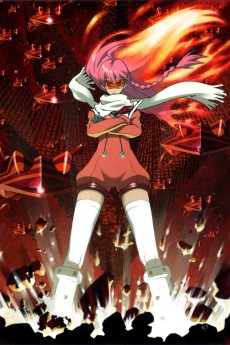 OVA ActionTop wo Nerae 2! DIEBUSTER
OVA ActionTop wo Nerae 2! DIEBUSTER MOVIE ActionDead Leaves
MOVIE ActionDead Leaves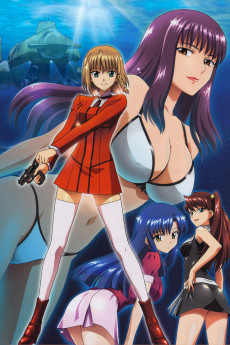 OVA ActionAIKa R-16: Virgin Mission
OVA ActionAIKa R-16: Virgin Mission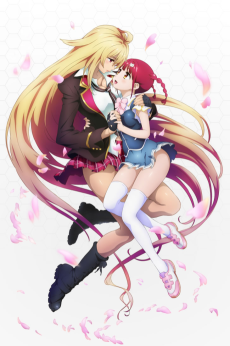 ANIME ActionValkyrie Drive: Mermaid
ANIME ActionValkyrie Drive: Mermaid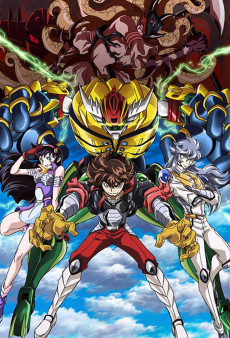 ANIME MechaKoutetsushin Jeeg
ANIME MechaKoutetsushin Jeeg
SCORE
- (3.5/5)
MORE INFO
Ended inSeptember 25, 2004
Main Studio Toei Animation
Favorited by 282 Users




